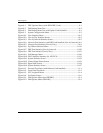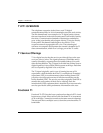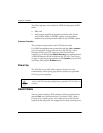
Chapter 1. Introduction
61200275L1-1 TSU IQ+ User Manual 1-5
FT1 remains almost exclusively an inter-exchange carrier (IXC)
service. Local exchange carriers (LECs) typically do not offer FT1,
so the user's proximity to the IXC's point-of-presence (POP) is key
in the savings that fractional T1 offers.
SNMP MANAGEMENT
SNMP management capability is provided in-band with support
for RFC 1315 (frame relay DTE MIB), RFC 1213 (MIB II), RFC 1406
(DS1/E1 MIB), and ADTRAN Enterprise MIB. MIB files are
available from ADTRAN in the support section of the ADTRAN
web page at www.adtran.com. Telnet capability is also supported.
For non-SNMP environments, VT-100 and front panel operation are
supported.
The TSU IQ+'s embedded SNMP feature allows the unit to be
accessed and controlled by a network manager in-band at the DTE
or network interface, out-of-band at the control port via SLIP or
async PPP, or using a LAN connection. LAN connection requires
the optional ethernet card (P/N 1204005L1). This card provides a
10BaseT ethernet interface to the LAN.
The term SNMP broadly refers to the message protocols used to
exchange information between the network and the managed
devices, as well as to the structure of network management data
bases. The three basic components of SNMP follow.
Network Manager
Control program that collects, controls, and presents data pertinent
to the operation of the network devices. It resides on a network
management station.
Agent
Control program that resides in each connected network device.
This program responds to queries and commands from the
network manager and returns requested information or invokes
configuration changes initiated by the manager.
MIB
Index to the organized data within a network device. It defines the
operation parameters that can be controlled or monitored.


















